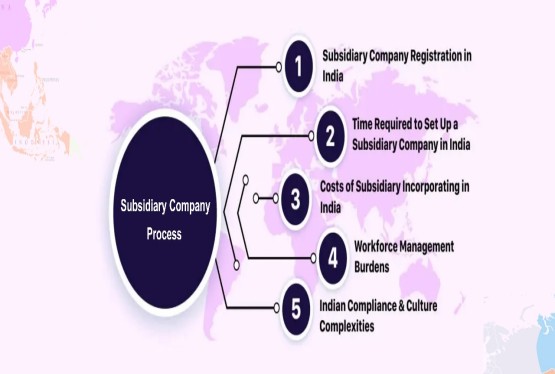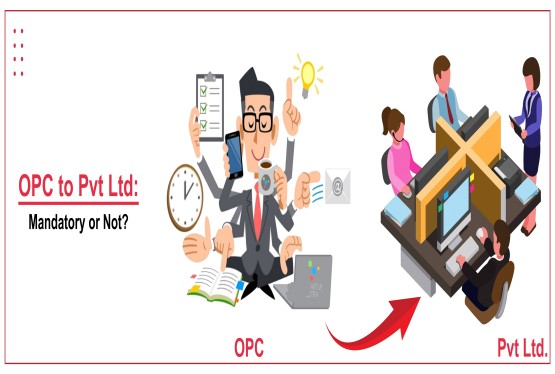When it comes to starting a business, choosing the right business structure is a crucial decision that will impact your company’s operations, liability, tax obligations, and ability to raise funds. In India, two of the most popular business structures are Private Limited Companies (Pvt Ltd) and Limited Liability Partnerships (LLP). Both entities offer distinct advantages and have specific features that make them suitable for different types of businesses. In this article, we’ll explore the differences, advantages, and disadvantages of Limited Liability Partnership and Private Limited Company, helping entrepreneurs make an informed decision when selecting the most appropriate business structure.
Meaning of a Pvt Ltd Company and an LLP
Before diving into the differences, let’s first understand the basics of both business structures.
What is a Private Limited Company (Pvt Ltd)?
A Private Limited Company is a type of company that is privately held, meaning its shares cannot be traded on a stock exchange. A Pvt Ltd company can have a maximum of 200 members and is governed by the Companies Act, 2013.
The key features of a Pvt Ltd company include:
• A minimum of two members and a maximum of 200 members.
• A minimum of two directors, with a maximum of 15 directors.
• The company has a separate legal identity, distinct from its members.
• Liability of members is limited to the extent of their shares in the company.
What is a Limited Liability Partnership (LLP)?
A Limited Liability Partnership (LLP) is a business structure that combines the benefits of both a partnership and a private limited company. Introduced in India in 2008 under the Limited Liability Partnership Act, 2008, LLPs are designed to provide the flexibility of a partnership while offering limited liability protection similar to that of a company.
The key features of an LLP include:
• A minimum of two partners, with no maximum limit on the number of partners.
• Limited liability for each partner, meaning their personal assets are protected.
• The liability of each partner is limited to the capital contributed by them.
• The LLP has a separate legal existence from its partners.
Pvt Ltd vs LLP: Key Differences
Let’s dive deeper into the differences between LLP and Private Limited Company. These distinctions will help you choose the structure that best suits your business goals and needs.
1. Number of Members/Partners
• Private Limited Company: A Pvt Ltd company requires a minimum of two members and a maximum of 200 members. The members, also known as shareholders, own the company. A private limited company must also have a minimum of two directors.
• LLP: A Limited Liability Partnership requires a minimum of two partners to establish, with no upper limit on the number of partners. There are no directors in an LLP, as all partners have a role in managing the business.
2. Ownership and Management
• Private Limited Company: The ownership of a Pvt Ltd company lies with its shareholders. However, the management of the company is conducted by the board of directors. Shareholders do not directly manage the company’s day-to-day operations.
• LLP: In an LLP, the partners are both the owners and managers of the business. There is no distinction between ownership and management, as partners are directly involved in running the business.
3. Registration Process
Both Pvt Ltd companies and LLPs must be registered with the Ministry of Corporate Affairs (MCA). However, there are differences in the registration forms and documentation required:
• Private Limited Company: The registration process for a Pvt Ltd company requires filing the SPICe+ form, along with the Memorandum of Association (MOA) and Articles of Association (AOA). The AOA and MOA are public documents.
• LLP: An LLP is registered by filing the FILLIP form along with the LLP Agreement. The LLP Agreement, which outlines the responsibilities of each partner, is not a public document.
4. Liability of Partners/Shareholders
• Private Limited Company: The liability of the members (shareholders) of a Pvt Ltd company is limited to the amount unpaid on the shares held by them. In other words, shareholders are only liable for the company’s debts up to the value of their shares.
• LLP: In an LLP, the liability of each partner is limited to the amount of capital they have contributed to the LLP. Partners are not liable for the actions of other partners unless they were directly involved in those actions.
5. Compliance and Statutory Requirements
• Private Limited Company: Pvt Ltd companies are required to comply with more stringent regulations. They must conduct at least four board meetings per year and an Annual General Meeting (AGM) within six months of the end of the financial year. Additionally, they are required to file financial statements with the Registrar of Companies (RoC) every year.
• LLP: LLPs have fewer compliance requirements. They are not required to hold board meetings or AGMs. A statutory audit is only mandatory for LLPs if their turnover exceeds Rs. 40 lakh or capital contribution exceeds Rs. 25 lakh.
6. Funding and Capital Raising
• Private Limited Company: One of the biggest advantages of a Pvt Ltd company is its ability to raise capital. Pvt Ltd companies can raise funds by issuing shares to investors, including venture capitalists (VCs) and angel investors. They can also access equity funding through the sale of shares.
• LLP: Raising funds through venture capital or equity funding is more challenging for LLPs, as investors cannot be shareholders in an LLP. However, LLPs can still raise funds from financial institutions like banks, which are willing to provide loans.
7. Share Transferability
• Private Limited Company: The transfer of shares in a Pvt Ltd company is generally restricted by the Articles of Association (AoA). Shares can be transferred to existing shareholders or to a new party, but such transfers typically require the approval of the board of directors.
• LLP: In an LLP, the transfer of ownership (or partnership interests) is not as straightforward. Partners can transfer their share of the LLP, but the transfer must be approved by other partners and is usually subject to a resolution passed by the existing partners.
Advantages and Disadvantages of Pvt Ltd and LLP
Each structure comes with its own set of benefits and drawbacks. Let’s explore the advantages and disadvantages of both LLP and Pvt Ltd Company.
Advantages of a Private Limited Company
1. Limited Liability: Shareholders' liability is limited to their shares in the company.
2. Separate Legal Entity: A Pvt Ltd company is a separate legal entity, which means it can own property, enter contracts, and sue or be sued.
3. Perpetual Succession: A Pvt Ltd company has perpetual existence. It continues to exist even if shareholders change or pass away.
4. Easy to Raise Funds: Pvt Ltd companies can raise funds through venture capital, private equity, or issuing shares to investors.
Disadvantages of a Private Limited Company
1. Higher Compliance Requirements: Pvt Ltd companies must comply with strict regulations and have more frequent reporting obligations.
2. Limited Membership: A Pvt Ltd company cannot have more than 200 shareholders, which limits its capacity to expand in terms of ownership.
3. Transfer Restrictions: The transfer of shares is restricted, and board approval is often required for the transfer to be valid.
Advantages of an LLP
1. Limited Liability: Partners in an LLP have limited liability, which protects their personal assets from business debts.
2. Fewer Compliance Requirements: LLPs have fewer statutory requirements, making them easier and less expensive to maintain.
3. Perpetual Succession: An LLP continues to exist even if one partner leaves or dies.
4. Flexibility in Management: Partners have the freedom to manage the business without needing to adhere to the formalities of a corporate structure.
Disadvantages of an LLP
1. Difficult to Raise Funds: LLPs cannot easily raise funds from venture capitalists or issue shares to investors.
2. Limited Growth Potential: As a small business structure, LLPs are not as suited for large-scale business expansion compared to Pvt Ltd companies.
3. Partner-Dependent: An LLP’s existence and success are heavily dependent on its partners. If the number of partners falls below two, the LLP is dissolved.
LLP vs Pvt Ltd Company – Which is Better for Your Business?
Choosing between LLP and a Private Limited Company depends on several factors such as the size of your business, funding needs, and management structure.
• Pvt Ltd Company: Best suited for businesses that expect to scale, require external funding, and want to offer limited liability protection to shareholders. It’s a more structured and regulated business entity that offers significant growth potential.
• LLP: Ideal for small businesses, startups, or partnerships that do not need external funding. LLPs are simpler to manage and have fewer regulatory requirements, making them a cost-effective choice for smaller enterprises.
Ultimately, the decision comes down to the nature of your business and long-term goals. If you plan to raise funds and expand significantly, a Pvt Ltd company might be the right choice. However, if you value flexibility, ease of management, and limited liability without needing significant funding, an LLP could be a better fit.
If you have any queries regarding LLP and Company Registration, you can book a consultation with our expert through mail info@ccoffice.in or Call/Whatsapp us at +91 9988424211.
FAQs
Q1. What is the main difference between an LLP and a Pvt Ltd company?
Ans. The primary difference between an LLP (Limited Liability Partnership) and a Private Limited Company (Pvt Ltd) lies in the ownership and management structure. In an LLP, the partners are both the owners and managers, and there is no distinction between the two. In contrast, a Pvt Ltd company has shareholders as owners and directors who manage the company’s affairs. Additionally, Pvt Ltd companies have more regulatory requirements compared to LLPs.
Q2. Can an LLP raise funds from venture capitalists or angel investors?
Ans. No, an LLP cannot raise funds from venture capitalists or angel investors in the same way a Pvt Ltd company can. In an LLP, investors cannot be shareholders, and thus cannot easily raise funds. However, LLPs can still obtain loans from financial institutions.
Q3. What are the minimum and maximum members required for an LLP and Pvt Ltd company?
Ans. An LLP requires a minimum of two partners but has no upper limit on the number of partners. A Pvt Ltd company must have at least two members but cannot exceed 200 members. Additionally, a Pvt Ltd company must have at least two directors, and the maximum number of directors is capped at 15.
Q4. Are statutory audits required for both LLPs and Pvt Ltd companies?
Ans. No, a statutory audit is not mandatory for an LLP unless its annual turnover exceeds Rs. 40 lakh or its capital contribution exceeds Rs. 25 lakh. However, a Pvt Ltd company must undergo a statutory audit every year, regardless of its turnover.
Q5. What is the registration process for an LLP and Pvt Ltd company?
Ans. The registration process for both business entities is similar but with slight differences:
• For an LLP, the FILLIP form is used, and partners must file the LLP agreement with the Ministry of Corporate Affairs (MCA).
• For a Pvt Ltd company, the SPICe+ form is used, and the company must submit the Memorandum of Association (MOA) and Articles of Association (AOA).
Q6. Can a Pvt Ltd company or an LLP have foreign investors?
Ans. Yes, both Pvt Ltd companies and LLPs can have foreign investors. However, for an LLP, foreign direct investment (FDI) requires approval from the Reserve Bank of India (RBI) and the Foreign Investment Promotion Board (FIPB). A Pvt Ltd company can receive FDI under the automatic route in most sectors, but certain sectors may require prior approval from FIPB.
Q7. How is the liability of the members in an LLP different from that of shareholders in a Pvt Ltd company?
Ans. In both LLP and Pvt Ltd companies, members have limited liability. However, in an LLP, each partner’s liability is limited to their capital contribution. In a Pvt Ltd company, shareholders' liability is limited to the unpaid amount on their shares. This means that if a company faces financial issues, the shareholders’ personal assets are protected beyond their investment in the company.












_crop10_thumb.jpg)





_crop10_thumb.jpg)




























-Form_crop10_thumb.jpg)

_crop10_thumb.jpg)























_learn_crop10_thumb.jpeg)
































_crop10_thumb.jpg)

_crop10_thumb.jpg)




















_crop10_thumb.jpg)















_for_Foreign_Directors_learn_crop10_thumb.jpeg)




_Act,_2015_learn_crop10_thumb.jpg)



































_learn_crop10_thumb.jpg)

































